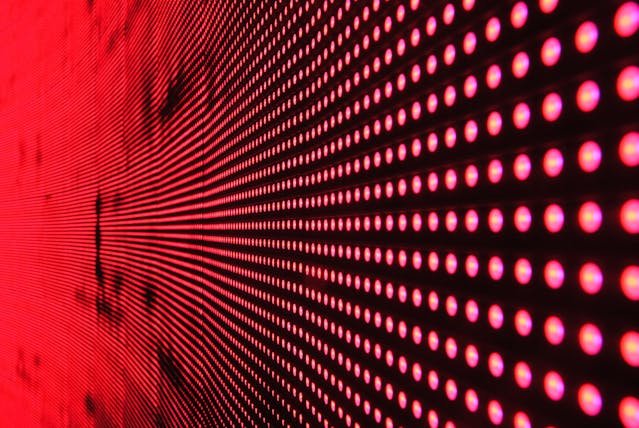The Benefits of Infrared Thermal Imaging and How it Works

Because it can reveal information that is not visible to the human eye, infrared thermal imaging has become a vital tool in many different industries. Thermal imaging provides a unique perspective on the thermal characteristics and behaviors of materials and systems by capturing the heat, or infrared radiation, that objects emit. This technology, which was first created for military use, is now extensively utilized in a variety of industries, from building inspections to medicine, where it helps with early problem detection, maintenance optimization, and safety protocol enhancement. The operation of infrared thermal imaging, its many uses, and the numerous advantages it offers to professional practices across the globe will all be covered in this article.
Understanding the Science Behind Infrared Thermal Imaging
Understanding the fundamentals of infrared radiation is essential to comprehending infrared thermal imaging. A form of electromagnetic radiation with a longer wavelength than visible light is called infrared (IR) radiation. Because of its longer wavelength, infrared radiation can detect temperature changes on an object's surface, which thermal imaging equipment can then record. Imaging technology can "see" heat differences and patterns because infrared energy is emitted directly from an object, unlike visible light, which reflects off surfaces. Infrared cameras interpret these thermal differences to produce a thermogram, a visual representation in which cooler regions are represented by darker shades and warmer regions by brighter ones.
Applications in Building Inspections
Building inspections are among the most common applications of infrared thermal imaging. It assists experts in this field in identifying problems like air leaks, moisture intrusion, and gaps in insulation without the need for invasive techniques. An infrared camera can be used to quickly identify areas of a building where heat escapes, which is a sign of inadequate insulation. Similar to this, concealed moisture behind walls or ceilings frequently manifests as colder areas, aiding in the early identification of possible water damage. In addition to saving time and money, useful IR thermography promotes energy efficiency and preventative maintenance, both of which are beneficial for property managers and homeowners.
Enhancing Safety in Industrial Settings
Infrared thermal imaging is essential for workplace safety and equipment maintenance in industrial settings. Heavy machinery that produces a lot of heat is frequently used in factories, power plants, and other industrial locations. Operators can avoid expensive shutdowns and lower the risk of fire or equipment damage by routinely using thermal imaging to monitor these machines and identify overheating components before they fail. Thermal imaging also makes it possible for workers to spot electrical issues that might otherwise go overlooked until they cause serious harm, like overloaded circuits or loose connections. This proactive approach to safety shields employees from potential risks and aids in maintaining continuous operation.
Medical Uses of Infrared Thermal Imaging
Infrared thermal imaging has also proven useful in the medical field. Thermal imaging is a non-invasive technique for identifying circulation problems, inflammation, and other temperature-related symptoms, but it cannot take the place of conventional imaging techniques like MRIs or X-rays. This technology is especially helpful in detecting abnormalities in blood flow and locating hot spots that could be signs of infection or inflammation. Thermography, for example, can help with patient monitoring for vascular problems, musculoskeletal disorders, or specific tumor types. Infrared thermal imaging is a useful addition to medical diagnostic tools because it can offer real-time insights without exposing users to radiation.
Infrared Thermal Imaging in Wildlife Conservation
Wildlife conservation is one important but little-known use of infrared thermal imaging. Researchers and conservationists can monitor populations and study animal behavior without affecting natural habitats by using thermal imaging. Thermal cameras can find animals in thick vegetation or at night when visibility is poor because they emit heat. This is especially helpful for monitoring nocturnal behavior, tracking endangered species, and spotting animals that are in trouble or in need of help. Thus, infrared technology supports biodiversity and a sustainable ecosystem by helping conservationists make well-informed decisions and safeguard wildlife.
Environmental and Climate Monitoring Applications
Infrared thermal imaging has also emerged as a useful instrument for climate and environmental monitoring. This technology is used by scientists to track glacial melting, observe temperature changes in bodies of water, and keep an eye on volcanic activity. Scientists can investigate the effects of climate change by using infrared imaging to record these temperature variations, which can reveal notable environmental changes. For instance, researchers can determine the sources of thermal pollution or evaluate the condition of marine ecosystems by identifying warmer or cooler water temperatures. Thus, infrared thermal imaging offers vital information to support environmental studies and inform climate action policy.
A strong, adaptable technology, infrared thermal imaging is finding more and more uses in a variety of industries. It provides a non-invasive method of system monitoring, early problem detection, and efficiency and safety enhancement by making temperature changes visible. We can anticipate even more sophisticated and reasonably priced thermal imaging solutions as technology develops, making it more widely available for both personal and professional use. In the end, being able to "see the unseen" creates new chances to solve problems and streamline procedures in a variety of industries, highlighting the special advantages of infrared thermal imaging technology.